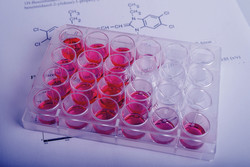Novel treatments for diabetes
Type 1 diabetes is an autoimmune disease associated with the loss of the insulin-producing pancreatic beta cells. It usually presents in children or young adults and the standard treatment is lifelong insulin administration. However, insulin therapy does not match the regulated hormone response and cannot prevent hypo- or hyperglycaemic episodes, increasing the risk for acute and chronic complications. Intraportal islet cell implants from human donor organs are emerging as an alternative therapy to diabetes. The promising results underscore the potential of functional beta cell mass restoration as the answer to diabetes complications. The scope of the EU-funded BETACELLTHERAPY (Beta cell therapy in diabetes) project was to develop innovative strategies for durable restoration of insulin production. The activities of the consortium concentrated on the production of progenitor cells capable of forming functional beta cells upon implantation as well as on compounds that can regenerate endogenous beta cells. Regarding progenitor cells, researchers explored different sources, namely human embryonic stem cells, induced pluripotent stem cells and acinar cells. They optimised the methods and reagents required for the differentiation of progenitor cells into insulin-producing beta cells. Considerable effort went into preclinical models for implants that allowed scientists to study the biology of implantation and microencapsulation. Transient administration of cytokines induced acinar cell reprogramming to beta cells through progenitor-like intermediate cells. Although this approach could reverse drug-induced diabetes, it was not tested in preclinical models and its clinical translation was unclear. In another part of the project, the consortium screened various antibody-based protocols to achieve tolerance to transplanted tissue. The approaches included reconstitution of regulatory T cells and induction of a privileged microenvironment. Overall, the BETACELLTHERAPY study made significant scientific progress towards the restoration and preservation of the beta cell mass at different stages of diabetes. Whether at an early phase when the beta cells are under immune attack, or later on when most have been destroyed, restoration of the function of beta cells could delay clinical progression and provide a cure for diabetes.
Keywords
Diabetes, stem cells, insulin, beta cells, implantation, tolerance



